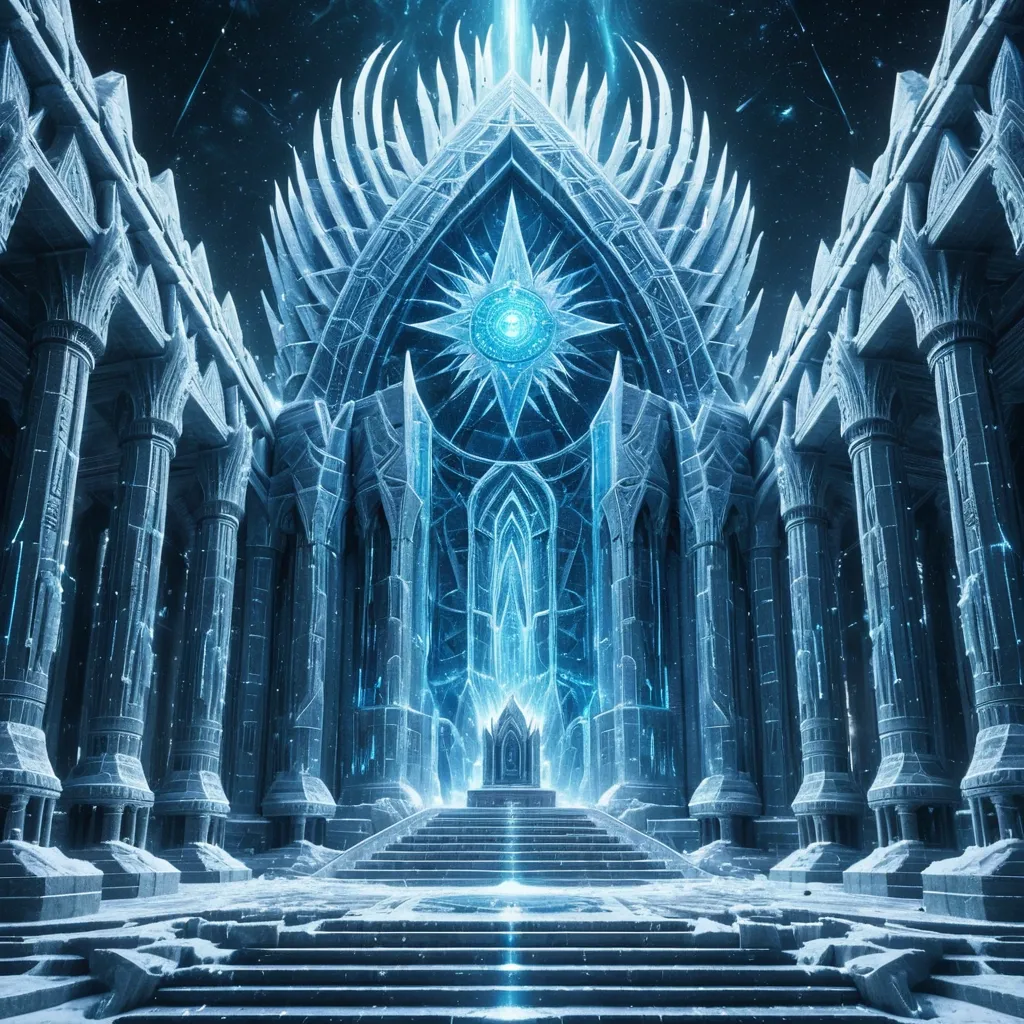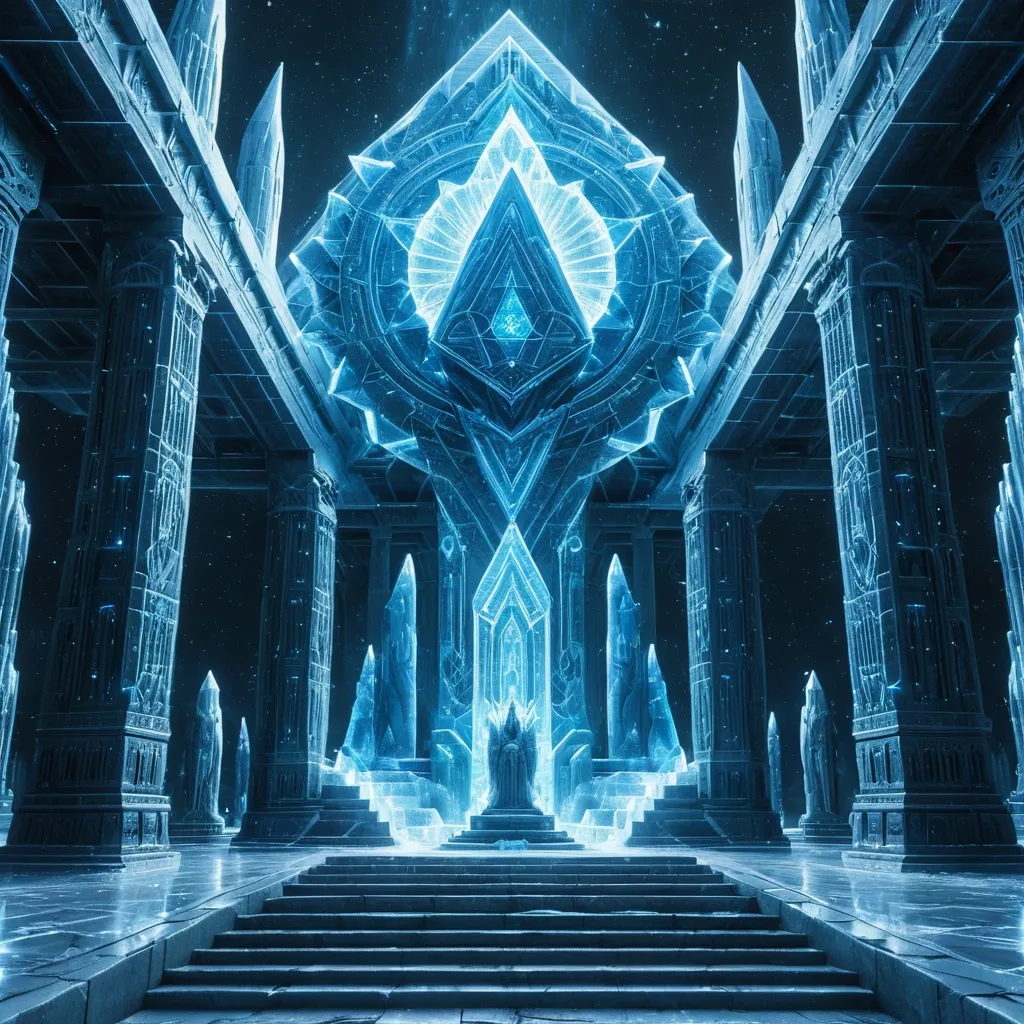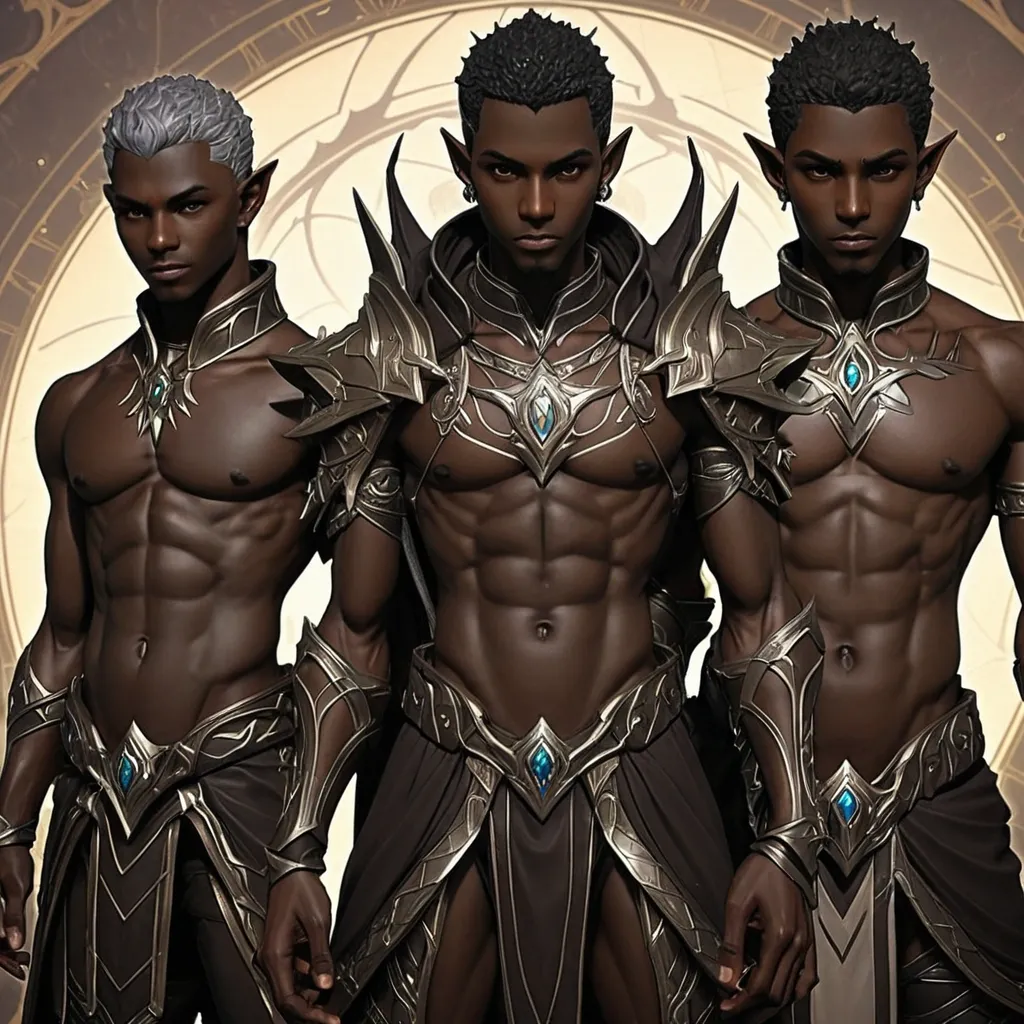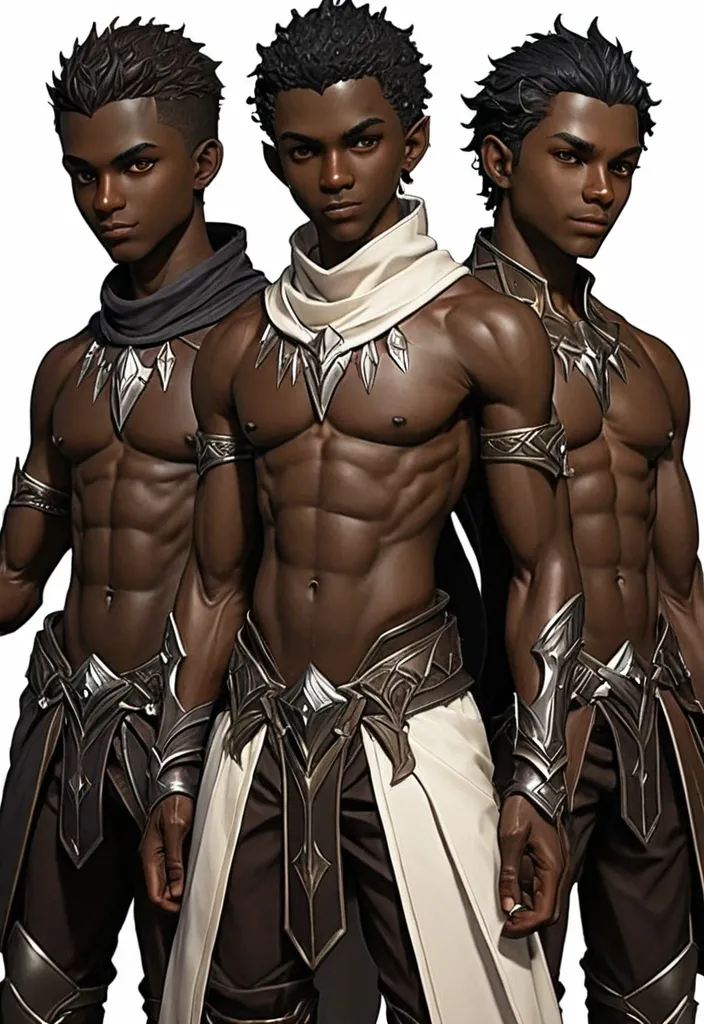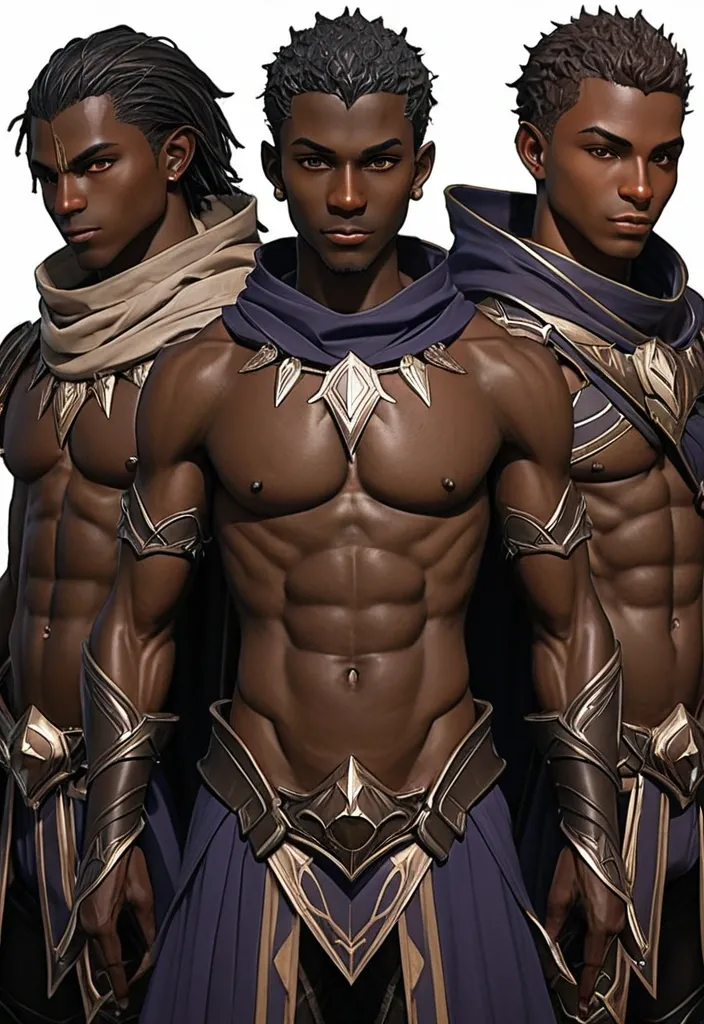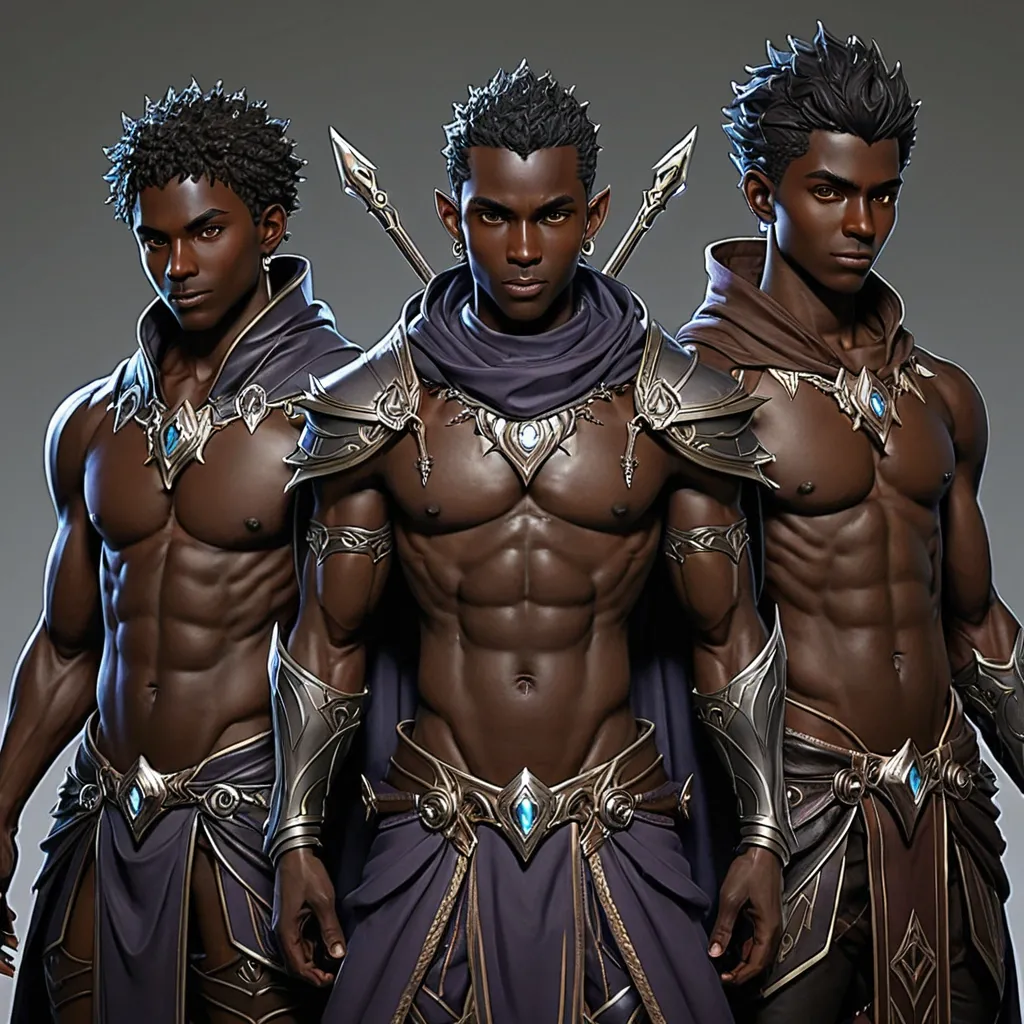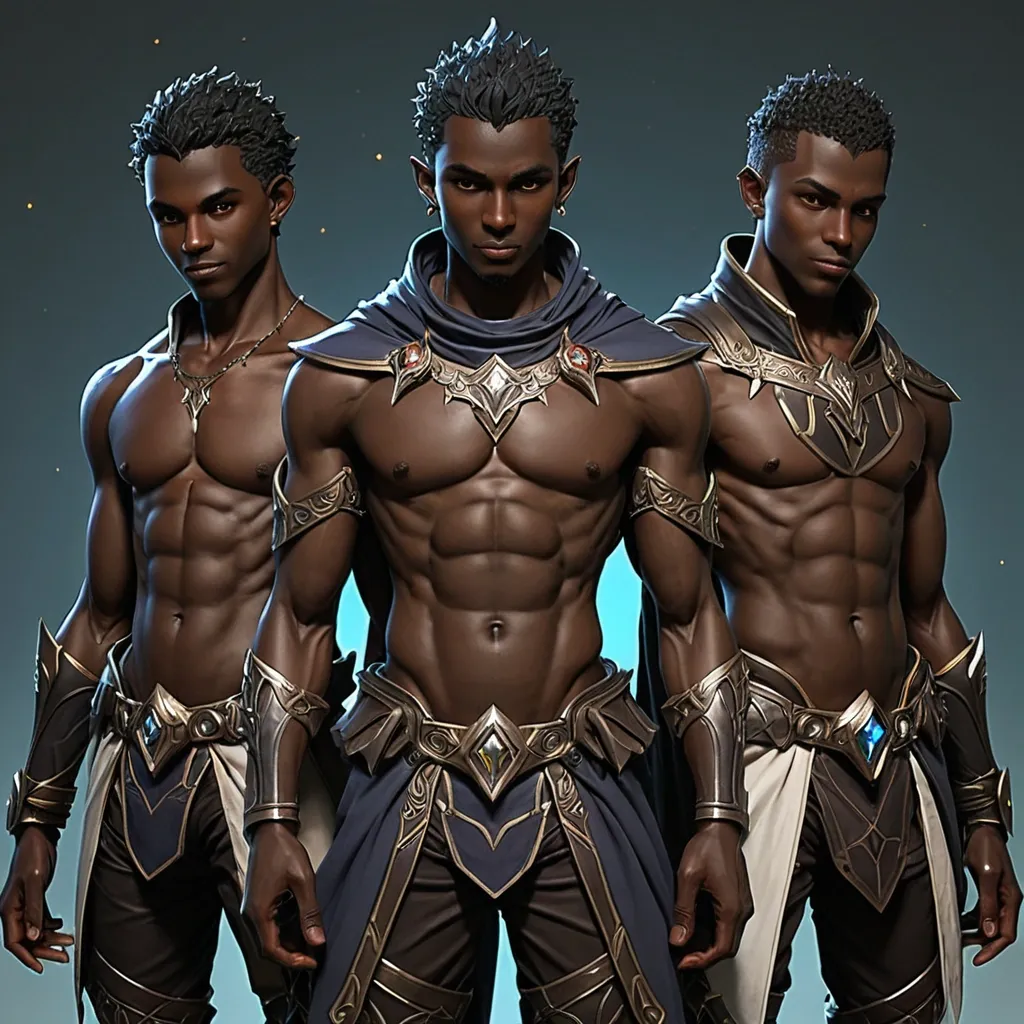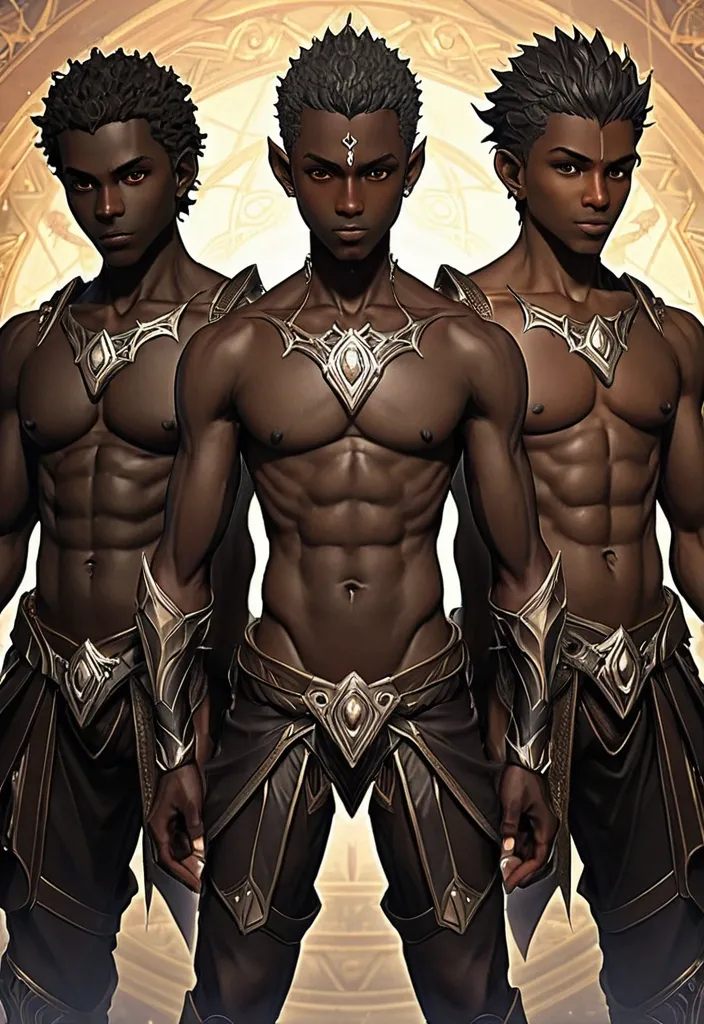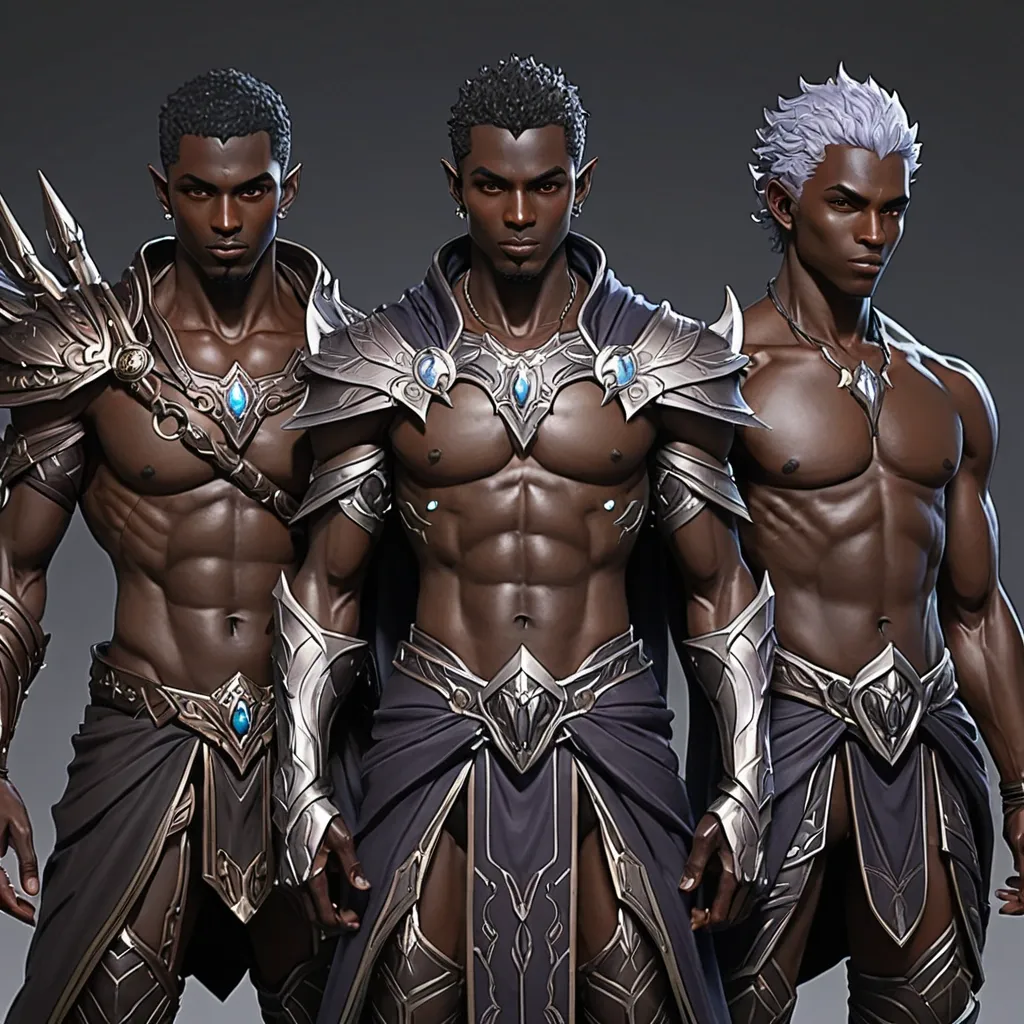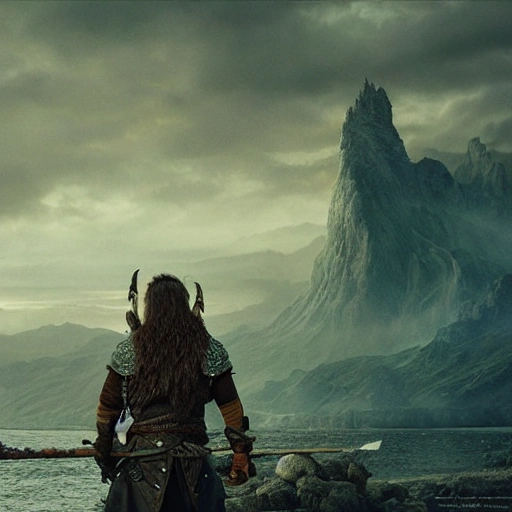Search Results for guardians
Explore AI generated designs, images, art and prompts by top community artists and designers.
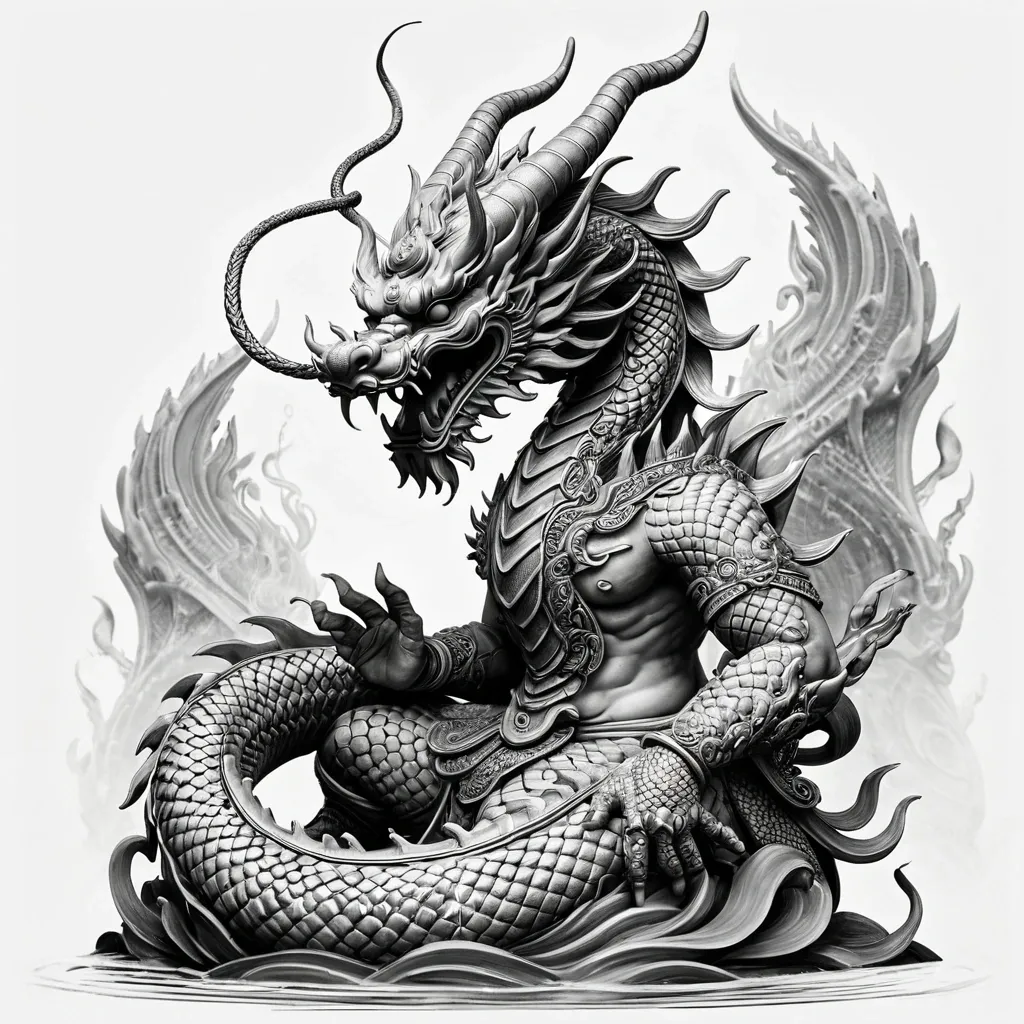
Intricate black and grey drawing , highly detailed and semi-realistic , designed as an advanced preparatory sketch for a tattoo. Full composition for outer bicep and shoulder. Central figure: traditional Thai Buddha , seated with one knee raised , head gently tilted to the side , serene and enlightened expression. Elegant drapery on his robe , with soft fabric folds and subtle shadows. Behind him , a majestic Thai Naga: a serpentine dragon with multiple ornate horns , sharp fangs , long finned whiskers , richly detailed scales and textured coils. The Naga winds behind the Buddha in an S-curve , dynamic and flowing , with sense of spiritual protection. Background: a delicate , elegant three-tier Thai pagoda , visible over the Buddha’s shoulder , with ornate roof details , curved tips , and shaded wood textures. Floating throughout the composition: soft , drifting Japanese cherry blossom petals , bringing poetic movement and lightness. The composition is harmonious , flowing with anatomical curves of the bicep and shoulder. Clear visual hierarchy , deep contrast , strong shading to emphasize volumes and textures. Drawing style: black and grey ink sketch , with high-definition pencil-like linework , bold outlines mixed with soft shading. No color. Not a tattoo render — pure art drawing with anatomical logic , atmospheric depth and rich symbolic detail. --- 🐉 Bonus — description précise du Naga thaïlandais : > The Thai Naga is a mythical serpent-dragon hybrid. It has a long , sinuous body like a snake , but with a fierce dragon face , a crown-like horned crest , flame-like eyebrows , and flowing fin-like ears. Its body is covered in symmetrical , overlapping scales , often detailed like fish or dragon scales. It exudes motion and power , and often coils with flowing elegance. Unlike Chinese dragons , it has a more divine and protective presence , often associated with water and temple guardianship. ,

A fusion between ancient and futuristic scooter with (((Alison Tyler))) She wears a swinsuit , cleavage , sci-fi desert outfit inspired from Dune Part 2 — featuring layered , white-toned stillsuit-like armor , futuristic design. Ride on a dirty MadMax motorcycle. The scooter is adorned with a ornate traditional carvings , intricate carvings and regal adornments enhance its divine presence , motion speed , embodying the eternal guardianship of Mayan’s sacred street road. ,

The Sun Guardians , on the other hand , are the bushi of the Sengo family. These warriors are entirely dedicated to protecting the Moshi shugenja , as well as the Temple of the Lady of the Sun. These warriors are known for their gleaming bronze helmets and armor with gracefully curved shoulders reminiscent of pagoda roofs. Their favorite weapon is the Moshi Sun Axe , a thin , spear-like axe carefully decorated with rays of Amaterasu. ,
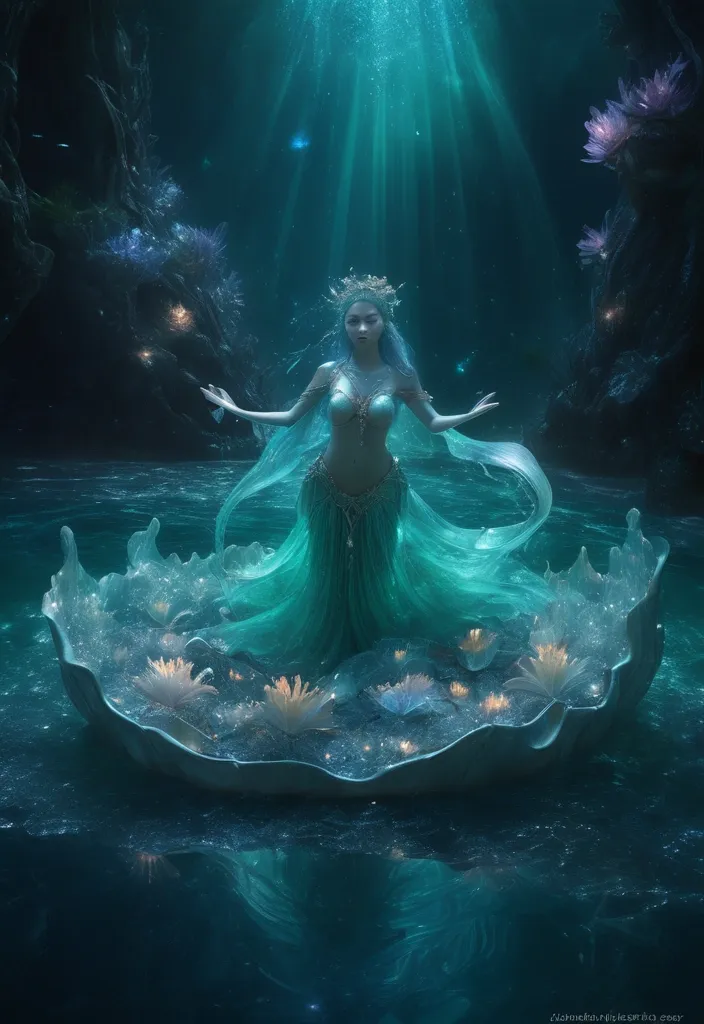
In the heart of a luminous underwater realm , a gathering of enchanting mermaids performs ancient oceanic magic. Their iridescent tails shimmer in hues of sapphire , emerald , and amethyst as they gracefully swirl through the glowing waters. Each mermaid possesses a unique aura , their hands weaving streams of liquid light that sparkle like constellations in the deep. Golden runes and mystical symbols appear in the water as their magic takes form , swirling into glowing orbs , delicate sea creatures made of pure energy , and floating crystals that pulse with hidden power. Some mermaids summon ethereal jellyfish that glow like underwater lanterns , while others call forth spirals of luminescent bubbles that dance around them like enchanted stars. The backdrop is a breathtaking underwater kingdom—towering coral castles with pearl-encrusted spires , radiant sea flowers that bloom with every spell cast , and a sky of liquid silver where moonlight filters through the waves. In the distance , a mystical whirlpool glows with a soft , celestial light , whispering ancient secrets to those who dare to listen. Among them , a majestic mermaid queen , crowned with seashells and flowing ribbons of seaweed , leads the ritual , her presence both regal and otherworldly. As the magic intensifies , the entire ocean shimmers with an ethereal glow , turning the underwater world into a dreamscape of wonder and mystery. The entire scene is pure fantasy—a mesmerizing realm where mermaids are not just guardians of the sea but wielders of an ancient and powerful magic. ,

bald nebula from guardians of the galaxy as a curvey lady with great hips and a beautiful body , by kim jung gi , standing facing front , blue and purple tones , painted by Frank Frazetta , scifi building , james gurney cinematic lighting , pillars of creation , johan liebert alucard , animation , white and red. instagram photo , sega genesis 1991 , gray wasteland , karst landscape , rollerskates , wearing a purple breton cap , crystalline light rays refract dust , blue - orange eyes ,

anime black man , concept art by albert biertadt , electrical arcs , and it is watching into a giant skyscraper with thousands of floors and bright yellow windows , victo ngai and guillermo del toro : ornate , hat , star guardians , a spiral magical wizard staff. bright art masterpiece artstation. 8k , blonde , highly ,
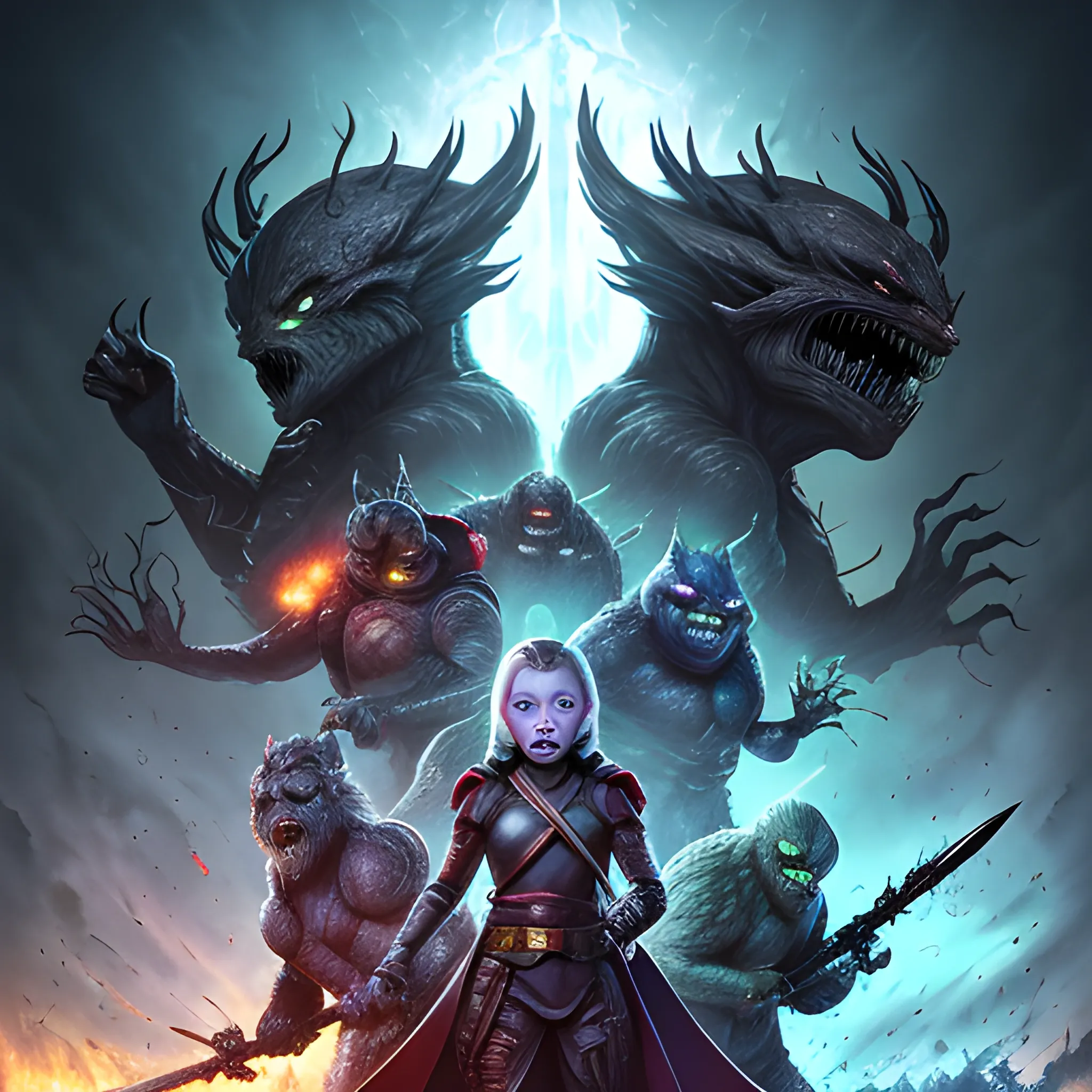
Despite their exceptional abilities , the sheer numbers and malevolence of the monsters proved overwhelming. Hazel's parents , fueled by an unwavering sense of duty , courageously faced the onslaught. However , in the midst of the chaotic battle , a powerful and sinister creature emerged from the shadows. It targeted Hazel's parents with a malevolent intensity , seeking to extinguish the guardians of Terasia. ,
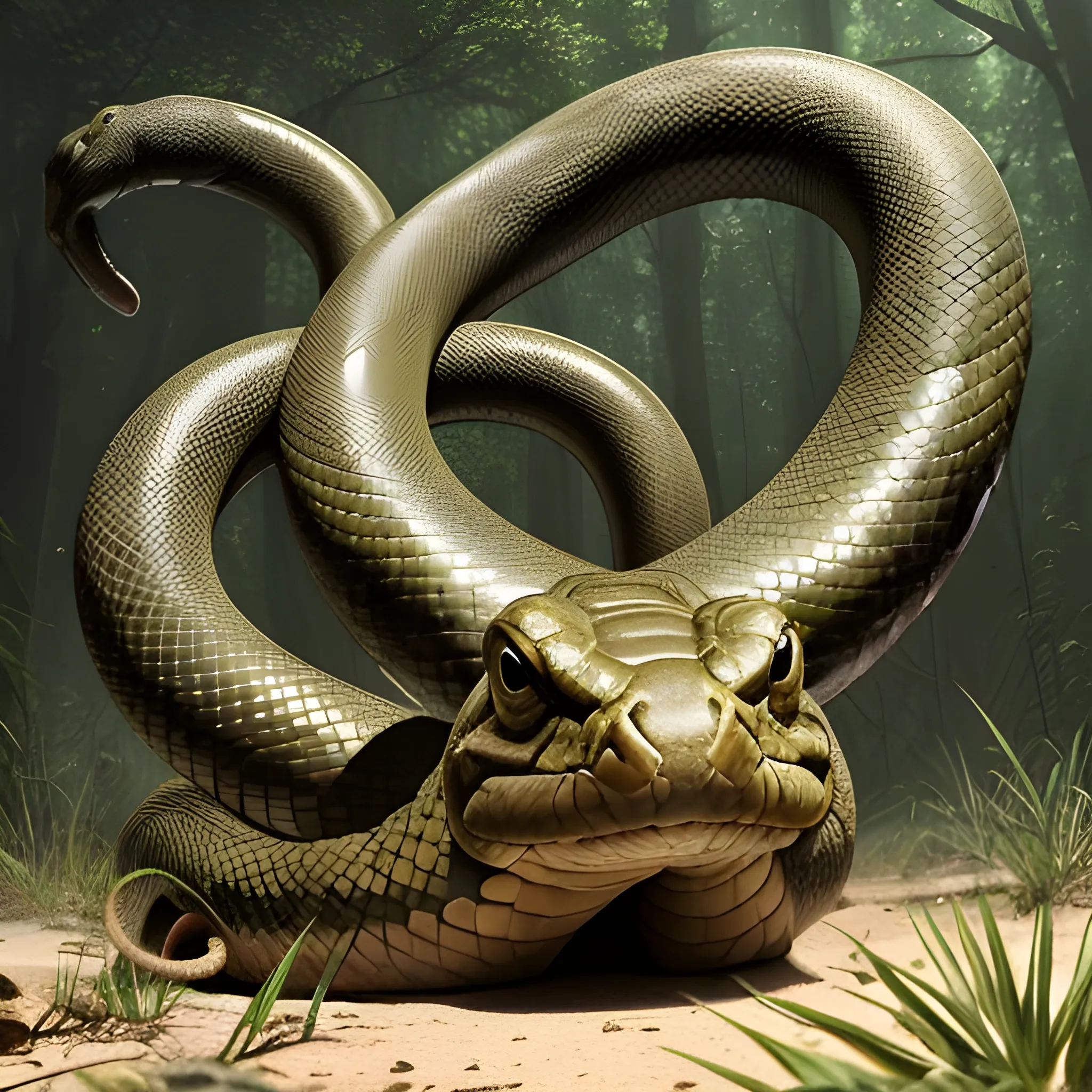
Appearance: The Giant Constrictor Snake is an enormous and intimidating reptile , a massive version of its smaller counterpart. It is a sight to behold , with a length that can reach up to 30 feet or more and a girth that makes it a formidable predator. The snake's scales can have various colors , ranging from earthy browns and greens to patterns that blend in with its environment. Its head is large and triangular , equipped with sharp teeth for grasping and holding its prey. Features: As its name suggests , the Giant Constrictor Snake possesses immense strength , allowing it to overpower and crush prey with its powerful coils. Despite its size , the snake is incredibly agile and swift , capable of striking with lightning speed when attacking. It is a non-venomous predator , relying on its constriction technique to subdue and immobilize its prey before consuming it. Habitat: Giant Constrictor Snakes are usually found in areas with an abundance of large prey , such as dense jungles , swamps , and even underground tunnels or caves. They are equally at home in terrestrial environments or in aquatic habitats , making them versatile hunters. In your DND world , they might inhabit untamed wilderness areas , guarding ancient ruins , or lurking near water sources. Behavior: Like their smaller counterparts , Giant Constrictor Snakes are solitary creatures and prefer to hunt alone. They are opportunistic predators , preying on a wide range of creatures , from smaller animals to larger beasts. Giant Constrictor Snakes have a keen sense of smell , which allows them to detect potential prey from a distance. Role in the World: In your DND world , Giant Constrictor Snakes could be apex predators , feared and respected by other creatures in their territory. They might be guardians of sacred places or serve as the subjects of local legends. Druids and rangers might view them as powerful symbols of the untamed and natural world. Encountering a Giant Constrictor Snake in the wild is a perilous and memorable experience for adventurers. The snake's size and strength make it a deadly foe , capable of overpowering even well-armored individuals. Players must exercise extreme caution and strategic thinking when dealing with these formidable predators. Fighting a Giant Constrictor Snake often involves a combination of ranged attacks , mobility , and teamwork to avoid its crushing coils and deliver damaging blows. The presence of Giant Constrictor Snakes in your campaign can add an element of danger and excitement to wilderness encounters , making players wary of exploring areas where these colossal serpents might lurk. ,
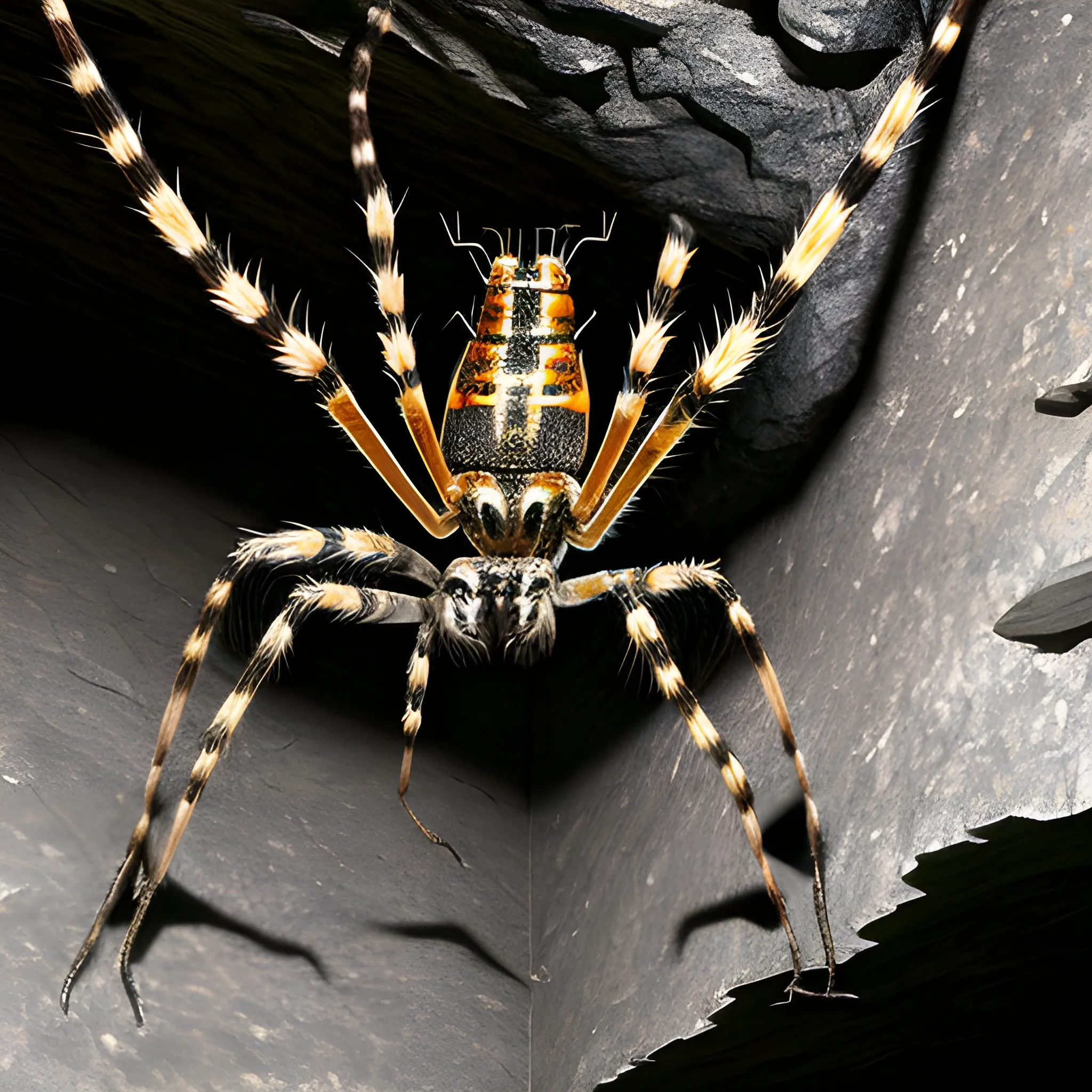
Appearance: The Giant Wolf Spider is an enormous arachnid , resembling a regular wolf spider but scaled up to a terrifying size. It has long , hairy legs , and its body can be up to 3 feet in length. The spider's exoskeleton is a mix of dark brown and black , camouflaging it in shadows and making it hard to spot in dimly lit environments. Its multiple eyes gleam with an eerie luminescence , providing it with excellent night vision. Features: Giant Wolf Spiders possess venomous fangs that they use to paralyze their prey. While their venom is not usually fatal to human-sized creatures , it can cause temporary paralysis and intense pain. They are incredibly agile and quick , making them adept ambush predators. Habitat: Giant Wolf Spiders are most commonly found in dark and damp environments , such as caves , forests , and subterranean tunnels. They are skilled at weaving complex webs that serve as both traps for their prey and a means to detect nearby movement. Behavior: These arachnids are solitary creatures and prefer to hunt alone. Despite their size , they are surprisingly stealthy and capable of stalking their prey unnoticed until they strike. They are skilled climbers and can scale walls and ceilings with ease. Role in the World: In your DND world , Giant Wolf Spiders might be common threats in certain regions , especially in dense forests or caves. They could be encountered as natural inhabitants of the wilderness or serve as guardians to ancient ruins and abandoned places. Their venomous bite and ability to ensnare their prey in webs make them formidable foes for adventurers. Encountering a Giant Wolf Spider in your campaign could lead to tense and suspenseful moments. The spiders might ambush adventurers , trying to paralyze them with their venom before delivering a deadly bite. Players might need to exercise caution and utilize strategies to counter the spider's agility and web traps effectively. Additionally , the presence of Giant Wolf Spiders can add an element of danger and fear to the wild and untamed areas of your world , making players wary of what lurks in the shadows and the darkness. ,

Appearance: The black bear is a large mammal with a sturdy build. Its fur is thick and mostly black , hence its name , although some individuals may have a light-brown muzzle or a small white patch on their chest. The fur is soft to the touch , providing excellent insulation during colder seasons. Adult black bears typically stand around 5 to 7 feet tall when on their hind legs and can weigh anywhere between 200 to 600 pounds , with males being larger than females. Features: The black bear has a distinctive humped back , which is a result of powerful muscles that enable them to dig and climb with ease. Their shoulders are well-developed , and their front paws have sharp claws , which they use for digging and climbing trees. Their strong jaws are equipped with sharp teeth , allowing them to consume various foods , including fruits , nuts , insects , and small animals. Despite their name , black bears can come in various shades of brown and cinnamon , but their fur generally appears dark from a distance. Habitat: Black bears are highly adaptable creatures and can be found in a range of habitats , including dense forests , mountainous regions , swamps , and even arid scrublands. They tend to favor areas with ample food sources , such as berries , nuts , and smaller mammals. In your DND world , they could inhabit ancient forests or remote wilderness areas , sometimes sharing territories with other woodland creatures. Behavior: Black bears are generally solitary animals , with the exception of mothers with their cubs. They are omnivorous , meaning they eat both plant matter and meat , but they are not typically aggressive unless provoked or threatened. They are skilled climbers , often seeking refuge in trees to avoid danger or to rest. During colder months , black bears may hibernate , using their stored fat reserves to survive the winter. Role in the World: In your DND world , black bears could play various roles , serving as guardians of certain areas , or sometimes appearing as natural obstacles for adventurers traveling through the wilderness. Druids and rangers might have a special connection with these majestic creatures , and they could be revered as symbols of strength , endurance , and adaptability. Encountering a black bear in the wild could offer opportunities for non-combat interactions , such as avoiding the creature by using stealth or calming it through the use of animal handling skills. However , if threatened or cornered , black bears could defend themselves fiercely , making them a potential challenge for adventurers who aren't careful in their approach. ,

In the year 1327 , amid the historical setting of a Benedictine abbey in northern Italy , a group of spiritual mystic assassins emerges , donning full orange hooded robes. The abbey has become a place of intrigue and mystery as monks are found dead in suspicious circumstances. It is within this ancient and hallowed place that the mystics reveal themselves , their presence shrouded in secrecy and profound power. The abbey , once a symbol of religious devotion , now serves as the backdrop for a confrontation that will bring together Franciscans and representatives of the Avignon popes. The meeting is set on neutral ground , the mystics acting as enigmatic guardians of this sacred encounter. Camera Settings: Camera: Nikon D850 DSLR Lens: 85mm lens Aperture: F1.2 Resolution: 4k Aspect Ratio: 1920:1080 Captured with the Nikon D850 DSLR , the image focuses on the spiritual mystic assassins in the foreground. The mystics , wearing their smooth white masks that lack detailed facial features , exude an aura of ancient wisdom as they gather in a circular formation around a table within the abbey. Their orange robes blend harmoniously with the historical surroundings , symbolizing their connection to the environment they protect. Soft , ambient lighting bathes the scene , creating a serene and spiritual atmosphere that contrasts with the cyberpunk elements introduced by the orange code overlay. This juxtaposition reflects the mystics' ability to bridge the gap between tradition and futuristic concepts. Drawing inspiration from the artistic styles of renowned artists like Claude Lacroix , Grzegorz Rosinski , François Bourgeon , Jean - Claude Mézières , Alessandro Barbucci , and Dustin Nguyen , the image blends various visual elements into a captivating composition. The mystic assassins' presence and purpose resonate with the rich history and intrigue of the abbey. As the mystics stand slightly off-center , overlooking the ancient abbey and its surroundings , they symbolize the balance between the past and the future , the enigmatic guardians of history and the agents of a mysterious and cyberpunk-infused future. This image serves as a glimpse into a world where ancient traditions and futuristic elements intertwine , where the spiritual mystic assassins stand as silent protectors , navigating the complex web of history and the evolving digital realm represented by bitcoin. Their collective identity transcends individuality , embodying the unity required for such a profound and consequential confrontation. 4k --ar 1920:1080 ,
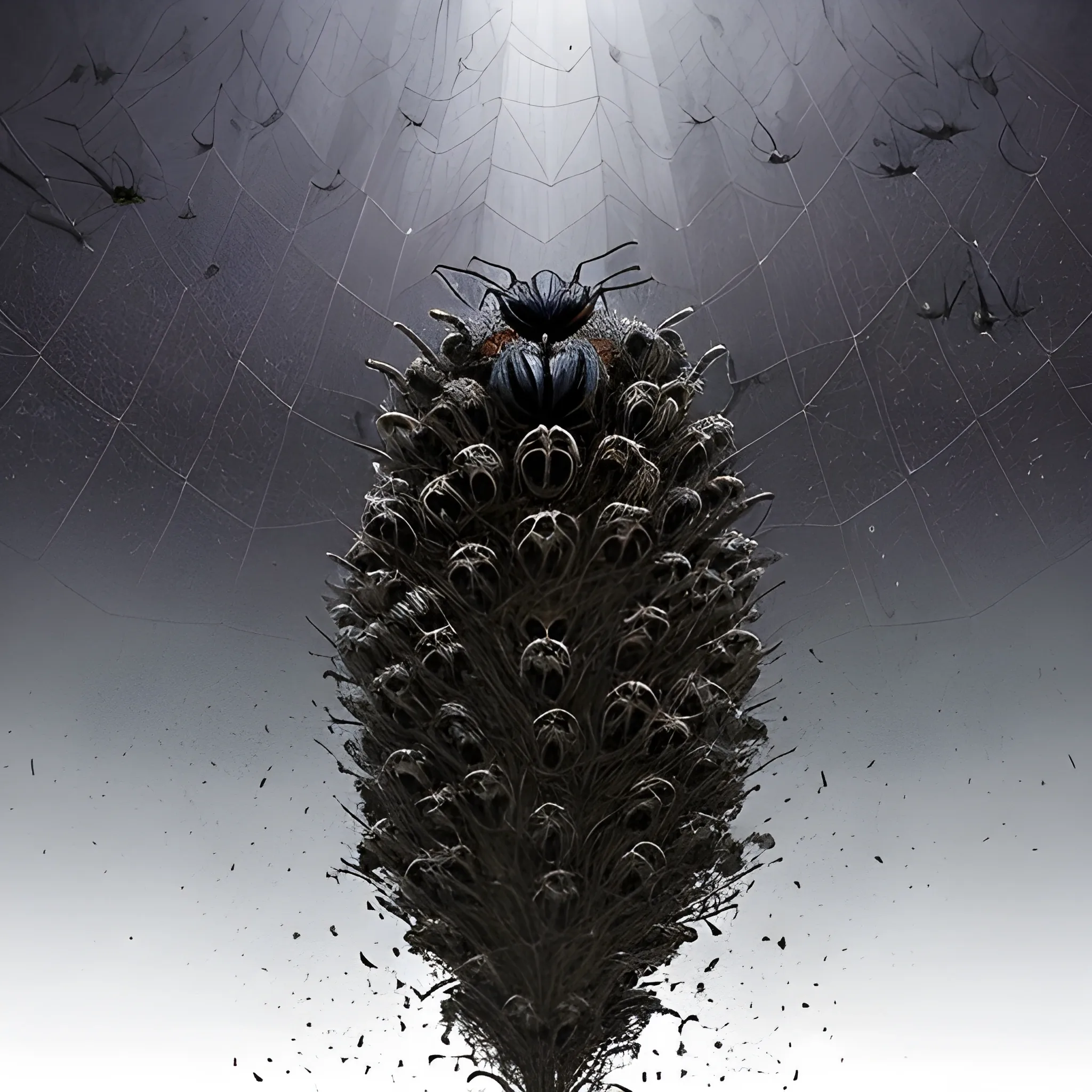
Appearance: A Swarm of Spiders is a horrifying and unsettling sight , as it consists of hundreds or even thousands of spiders working together as a single entity. The swarm appears as a writhing mass of crawling legs , forming a dark and undulating cloud of arachnids. The individual spiders in the swarm vary in size , but they are typically small , ranging from tiny spiders to larger ones with leg spans of a few inches. The swarm's color can range from a mix of dark browns and blacks to lighter hues , depending on the types of spiders comprising it. Features: The Swarm of Spiders moves with a coordinated fluidity , as if guided by an unseen intelligence. While each spider is relatively weak on its own , the collective strength of the swarm is overwhelming. The swarm is highly aggressive , attacking anything that comes within its vicinity. Its bite can deliver venom that , while not deadly , can cause pain , discomfort , and temporary paralysis. The swarm's sheer numbers can be its greatest advantage , allowing it to overwhelm and immobilize even larger creatures. Habitat: Swarms of Spiders are typically found in areas with a high concentration of spiders , such as dense forests , abandoned structures , or ancient ruins. They may inhabit dark and secluded places where their presence can go unnoticed until it's too late for unsuspecting intruders. Behavior: Swarms of Spiders are driven by instinct and the collective intelligence of the individual spiders that make up the swarm. They act as a cohesive unit , attacking en masse to subdue their prey and cocoon it in sticky webs. Swarms of Spiders can move quickly , scaling walls and surfaces with ease , which makes them challenging to escape from once they have engaged a target. Role in the World: In your DND world , Swarms of Spiders could be a terrifying threat lurking in the wild and dark corners of the land. They might be drawn to areas of powerful magic or necromantic influence , serving as guardians to forbidden places or the minions of evil spellcasters. The sight of a Swarm of Spiders can instill fear and panic in adventurers , as they face an unrelenting horde of venomous creatures. Encountering a Swarm of Spiders in your campaign can be a harrowing experience for adventurers. The swarm's ability to cover large areas and its relentless pursuit make it a deadly adversary. Players might need to think creatively to avoid or disperse the swarm , using spells , fire , or other area-of-effect attacks to fend off the spider horde. Additionally , the presence of Swarms of Spiders can create a sense of dread and trepidation , heightening the tension in areas where they are known to dwell , making players ever watchful for the signs of these arachnid hordes. ,

Appearance: The Crocodile is a large and powerful reptile , known for its distinctive long snout , sharp teeth , and armored body. Its scales can have various shades of green , brown , or gray , blending in with the murky waters and marshes it inhabits. The Crocodile's eyes and nostrils are positioned on the top of its head , allowing it to remain mostly submerged while still keeping a watchful eye on potential prey. Features: The Crocodile is an apex predator in aquatic environments , using its powerful jaws to seize and drag its prey underwater. It possesses incredible strength and resilience , making it a fearsome hunter and a challenging opponent for adventurers who venture into its territory. Crocodiles are well-adapted for both land and water , able to move quickly on land and remain submerged for extended periods. Habitat: Crocodiles are typically found in freshwater bodies such as rivers , lakes , and swamps , though they can also inhabit saltwater habitats like estuaries and coastal areas. They are highly territorial creatures , claiming areas of water as their own hunting grounds. In your DND world , they might be guardians of hidden treasures or sacred places. Behavior: Crocodiles are ambush predators , relying on stealth and patience to catch their prey unaware. They lie submerged , often with only their eyes and nostrils visible , and strike with lightning speed when an opportunity presents itself. Crocodiles are more aggressive during their breeding season or if they feel threatened. Role in the World: In your DND world , Crocodiles could be symbols of primal power and ancient guardians. They might be revered or feared by local tribes as creatures of great significance in their myths and beliefs. Druids and rangers might have a connection with Crocodiles , viewing them as an essential part of the natural order. Encountering a Crocodile in the wild can be a dangerous and adrenaline-pumping event for adventurers. Players must be cautious around bodies of water known to be inhabited by Crocodiles , as these creatures can launch surprise attacks. Crossing rivers or exploring swampy terrain could become treacherous , and players will need to be vigilant to spot the telltale signs of lurking predators. The presence of Crocodiles in your campaign adds an element of danger and excitement to aquatic and marshy environments. They can create memorable and intense encounters , challenging players to use their wits and skills to outmaneuver and defeat these fearsome reptilian predators. Additionally , the idea of crossing treacherous waters or exploring hidden marshlands where Crocodiles dwell can evoke a sense of adventure and exploration in your DND world. ,
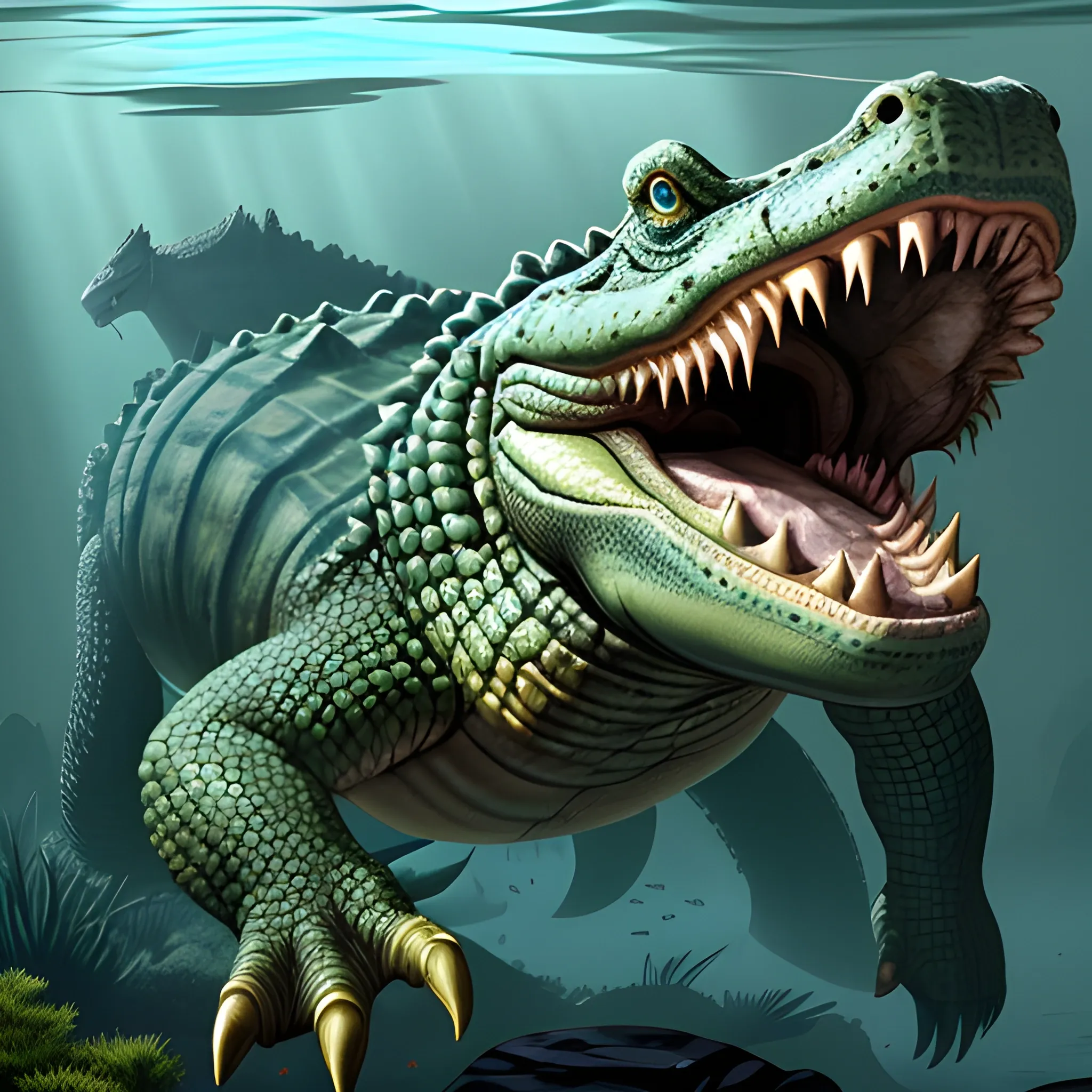
Appearance: The Giant Crocodile is an enormous and monstrous reptile , dwarfing its smaller counterpart in size and power. It has a massive body covered in thick and rugged scales that can range from dark greens to deep browns , perfectly camouflaging it in its aquatic habitat. Its long and powerful tail serves as a formidable weapon , enabling it to swim swiftly and strike with devastating force. The Giant Crocodile's eyes gleam with an intelligence and predatory instinct that sets it apart from ordinary creatures. Features: The Giant Crocodile is a colossal apex predator , boasting immense strength and resilience. Its jaws are filled with rows of sharp teeth , capable of crushing bones and armor with ease. Unlike its smaller kin , the Giant Crocodile is fully adapted for a purely aquatic lifestyle , rarely venturing onto land except to bask in the sun or establish dominance in its territory. Habitat: Giant Crocodiles prefer large bodies of freshwater , such as expansive rivers , deep lakes , and marshlands. They are territorial creatures , claiming vast stretches of water as their hunting grounds. In your DND world , they could inhabit mysterious swamps or hidden lagoons , guarding ancient secrets or treasures. Behavior: As ambush predators , Giant Crocodiles are masters of surprise attacks. They remain mostly submerged , with only their eyes and nostrils visible above the water's surface. When potential prey ventures too close , the Giant Crocodile strikes with astonishing speed and strength , dragging victims underwater to drown or consume. Role in the World: In your DND world , Giant Crocodiles could be legendary creatures , feared and respected by both locals and adventurers alike. They might be considered as guardians of ancient temples or revered as avatars of primordial nature. Druids and rangers might see them as symbols of untamed and primal power. Encountering a Giant Crocodile in the wild is a dangerous and potentially deadly event for adventurers. Its size and power make it an incredibly challenging opponent , even for a well-prepared party. Players must exercise extreme caution when navigating bodies of water known to be inhabited by Giant Crocodiles , as these creatures can deliver swift and lethal attacks. The presence of Giant Crocodiles in your campaign can create an atmosphere of danger and trepidation when exploring swampy and aquatic environments. Players will need to be constantly vigilant and employ strategic thinking to avoid becoming victims of these monstrous reptiles. Crossing waterways or searching for hidden artifacts in areas known to be Giant Crocodile territory can create a sense of high stakes and urgency in your DND world. ,

